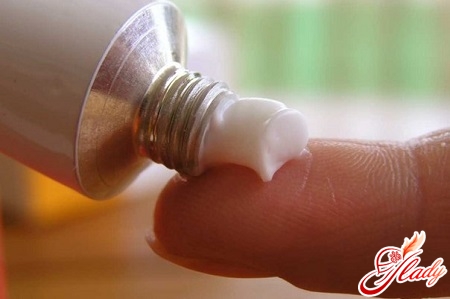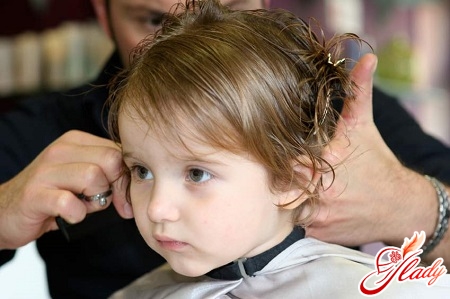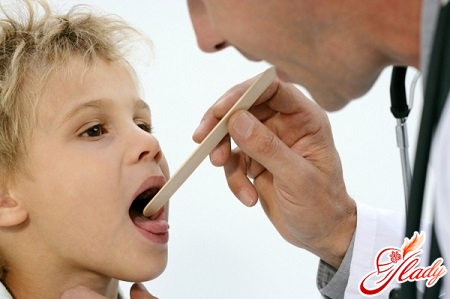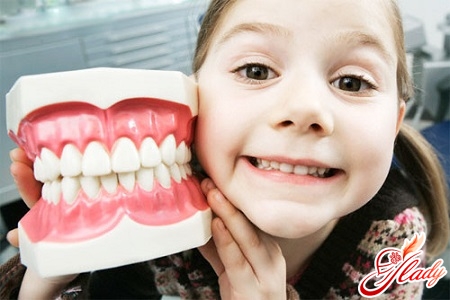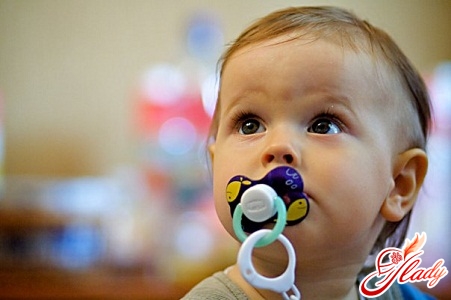 Your little one is finally with you.Mom and dad look at the baby with adoration and a certain amount of anxiety. And this anxiety is quite understandable - small children are susceptible to various misfortunes and diseases. And one of these misfortunes is increased intracranial pressure. In our country, pediatricians are very fond of making such a diagnosis, just to be on the safe side, without conducting the necessary examination. But increased intracranial pressure, as a rule, is based on quite serious pathologies that require immediate treatment. Otherwise, the child's condition will only worsen, because treatment of intracranial pressure is pointless if the original source - the disease itself - is not eliminated. Most often, increased intracranial pressure is a consequence of such a disease as hydrocephalus of the brain.
Your little one is finally with you.Mom and dad look at the baby with adoration and a certain amount of anxiety. And this anxiety is quite understandable - small children are susceptible to various misfortunes and diseases. And one of these misfortunes is increased intracranial pressure. In our country, pediatricians are very fond of making such a diagnosis, just to be on the safe side, without conducting the necessary examination. But increased intracranial pressure, as a rule, is based on quite serious pathologies that require immediate treatment. Otherwise, the child's condition will only worsen, because treatment of intracranial pressure is pointless if the original source - the disease itself - is not eliminated. Most often, increased intracranial pressure is a consequence of such a disease as hydrocephalus of the brain.
What is hydrocephalus?
Hydrocephalus is commonly called dropsy.of the brain. With hydrocephalus, the volume of the ventricles of the brain increases, often quite significantly. The child's brain is structured as follows: it has several cavities called ventricles that communicate with each other. These cavities are filled with cerebrospinal fluid - cerebrospinal fluid. If too much cerebrospinal fluid is produced, it accumulates in the cavities of the brain. This fact leads to the development of dropsy of the brain, or hydrocephalus. Moreover, the greater the excess fluid, the more severe the disease, and the more the general health of the child and his brain suffer. Hydrocephalus comes in several types, depending on the localization of the cerebrospinal fluid. If the cerebrospinal fluid cannot get from one ventricle to another, hydrocephalus is called non-communicating or occlusive. If the cerebrospinal fluid freely moves from one ventricle to another, hydrocephalus is called communicating or open. In addition, hydrocephalus can be the main disease - primary or secondary: the result of other diseases, such as congenital malformations of the central nervous system, cerebral vessels, tumors of various origins. There are still quite a large number of varieties of hydrocephalus, but all of them are derivatives of these main types.
Symptoms of hydrocephalus
It goes without saying that malabsorptionof the cerebrospinal fluid and its circulation cannot but leave a trace for the child's health. And the manifestations can be very different in different children, especially in different age categories - up to two years old, and after two years of age. Symptoms at the age of up to two years: The most important sign that a child suffers from hydrocephalus is the accelerated growth of the head circumference. This happens because the cranial sutures of a small child have not yet grown together, and the bones are pushed apart by the increasing brain. This happens in much the same way as when inflating a balloon, only in the brain instead of air there is excess water. As you know, until the child reaches one year of age, it is necessary to visit a pediatrician for a preventive examination once a month. The mandatory examination includes measuring the head circumference. The doctor makes a graph of the growth of the head circumference, with the help of which you can track the increase in head circumference. Most often, the cause of the pathological increase in head circumference is hydrocephalus. In addition to the excessively rapid growth of the head circumference, hydrocephalus may be indicated by a change in the large fontanelle - it increases in size and protrudes excessively. Normally, the fontanelle should close by the age of one year, but if the child suffers from hydrocephalus, the fontanelle may be open at two years. If you are interested in what hydrocephalus looks like in children, photos will help you get an idea. The proportions of the head change - the bones of the skull become significantly thinner, as a result of which the baby's forehead increases and protrudes forward, becoming disproportionate. The venous network is clearly visible under the skin of the forehead and face. If the disease continues to progress, the baby's eyes begin to droop, the muscle tone of the arms and legs increases. There is a clear lag in the child's psychomotor development:
- The child does not begin to hold the head in due time.
- The child does not begin to sit down on his own and even try to sit down.
- The same goes for trying to get up on your own.
A child suffering from hydrocephalus of the brainмозга, вялый, он не испытывает интереса ни к чему вокруг, очень часто вдруг начинает плакать, без видимых на то причин. Врачи предполагают, что ребенок зачастую испытывает головную боль, так как кроха очень часто хватается за голову. Существует огромное количество самых различных симптомов повышенного внутричерепного давления. Однако большую часть из них способны распознать только опытные врачи – педиатр, нейрохирург или невропатолог. Единственное, что под силу родителям – это самостоятельно измерять окружность головы ребенка и отмечать изменения в его поведении и психомоторном развитии. В том случае, если родители и участковый педиатр заметят какие-либо отклонения в росте и развитии ребенка, это должно стать серьезным поводом для полного и тщательного обследования у ребенка. Это обследование необходимо для того, чтобы исключить наличие у ребенка гидроцефалии. Симптомы гидроцефалии у детей старше двухлетнего возраста: Если же гидроцефалия развивается у детишек старше двухлетнего возраста, симптоматика заболевания выглядит немного по – другому, нежели у малышей. Самым классическим симптомом повышенного внутричерепного давления у детей старше двух лет является постоянная головная боль, сопровождающаяся чувством тошноты и даже изнуряющей рвотой. Чаще всего это явление наблюдается в ночные и утренние часы. Кроме того, у ребенка страдающего гидроцефалией, зачастую происходят патологические изменения глазного дна, вследствие того, что у ребенка происходит отек диска зрительного нерва. Подобное нарушение без труда выявляется на осмотре ребенка врачом — окулистом. Родители всегда должны помнить о том, что любые головные боли у детей, а уж тем более те, которые сопровождаются тошнотой и рвотой, практически всегда являются грозным симптомом, требующим немедленного обследования ребенка врачом – невропатологом или нейрохирургом. Ведь гидроцефалия далеко не единственная возможная причина подобных симптомов. Тошнота и рвота могут быть вызваны различными опухолями и пороками развития головного мозга. К огромному сожалению, очень часто педиатры просто напросто упускают из виду этот факт. И в результате ребенок получает абсолютно не нужное ему лечение таких заболеваний, как панкреатит, гастрит, дискинезия желчных пузырей, отравлений и прочих заболеваний желудочно-кишечного тракта. В результате ребенок попадает к врачу – невропатологу только тогда, когда врачам становится понятно, что лечение не принесло результата. А драгоценное время уже упущено, заболевание может принять запущенную форму, и лечение будут гораздо более тяжелым и менее продуктивным. В том случае, если родители заметят у своего ребенка подобные симптомы, они должны настоять на немедленном обследовании ребенка у невропатолога. В том случае, если заболевание диагностируется на ранних сроках, прогноз заболевания будет гораздо более благополучным, чем при запущенных формах. И порой только своевременная диагностика способна спасти жизнь малышу. Существует еще целый ряд симптомов, которые могут свидетельствовать о наличии у ребенка гидроцефалии. К таким симптомам относятся эпилептические судороги, повышенный тонус рук и ног, недержание мочи, нарушение зрения. Кроме того, при гидроцефалии нередки различные нарушения работы эндокринной системы: отставание или опережение в росте, преждевременное половое созревание, ожирение.
Causes of hydrocephalus development
Of course, upon learning that their child is sickhydrocephalus, they begin to ask themselves the question "Why?". It is simply impossible to answer this question unequivocally. Below are the main reasons leading to the development of hydrocephalus:
- Fetal hydrocephalus
The level of modern medicine is quite high, andModern methods of prenatal diagnostics allow doctors to detect hydrocephalus in the fetus. For example, ultrasound diagnostics allows detecting hydrocephalus of the brain already at 16-20 weeks of pregnancy. Most often, hydrocephalus during intrauterine development is caused by such intrauterine infections as herpes, toxoplasmosis or cytomegalovirus. That is why, when planning a pregnancy, it is very important to take all tests for latent infections and, if necessary, undergo an appropriate course of treatment. This measure will help you prevent a huge number of health problems in the baby, and not just the risk of developing hydrocephalus. In rarer cases, hydrocephalus can develop due to a genetic predisposition.
- Hydrocephalus of newborns
The cause of the development of hydrocephalus of the brain innewborns in 90% of all cases are congenital malformations of the brain or spinal cord, as well as intrauterine infections. Much less often, but it still happens that the cause of hydrocephalus is birth trauma, especially in those babies who were born prematurely.
- Hydrocephalus in older children
In the event that hydrocephalus developsoccurs in children over one year of age, there can be a huge number of reasons. Such reasons can be: meningitis, encephalitis, infectious diseases, malformations of the blood vessels of the brain, traumatic brain injury, genetic disorders. Sometimes, unfortunately, it is not possible to determine why hydrocephalus of the brain occurs in children in some cases.
Diagnosis of the disease
In order to diagnose hydrocephalus, the doctor must interview the parents and examine the child. After this, the baby will undergo a series of tests:
- NSG - (neurosonography).
- CT scan.
- Magnetic resonance imaging (MRI)
- Ultrasound examination of the brain. It is spent to children who have not reached the age of two years.
Based on the data received, the doctor will make the correct diagnosis and choose the treatment tactics that are appropriate for your child.
Treatment of hydrocephalus
In case the diagnosis is hydrocephalusconfirmed, the child simply needs a consultation with a neurosurgeon. In almost all cases, hydrocephalus treatment should be surgical. And it is the neurosurgeon who is able to identify both indications and contraindications for surgery. If this is not done in a timely manner, the disease will take a chronic advanced course, and treatment will be more difficult. Of course, all parents are worried about the upcoming surgery. However, you should not delay making a decision too much. After all, constantly increased intracranial pressure leads to a delay in psychomotor development, which is not always possible to make up for later. Also, do not forget about the size of the child's head. As already mentioned, hydrocephalus leads to the fact that the brain circumference of the head is constantly increasing. And after the operation, it will not return to its previous size, but will simply stop increasing. And the longer you delay the operation, the more your baby's head will increase in size. The point of the operation is to divert the brain from the ventricles to some other cavities of the body, from where it is then freely excreted from the body. Most often, ventriculoperitoneal shunting is used for these purposes. The doctor installs a unique system of silicone catheters through which cerebrospinal fluid from the ventricles of the brain is pumped into the abdominal cavity. Such operations not only save hundreds of children's lives every year, but also allow such children to lead a full life: attend kindergarten, school. We recommend reading:




